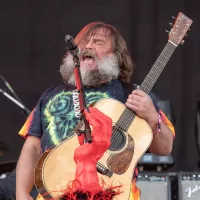A bank is a financial institution that plays a crucial role in the economy by accepting deposits from the public and creating demand deposits. It then utilizes these deposits to provide loans, either directly or indirectly through capital markets. This lending activity fuels economic growth by providing individuals and businesses with access to capital for investment and consumption. Banks act as intermediaries between savers and borrowers, facilitating the flow of funds within the economy.
1979: Establishment of the Federal Financial Institutions Examination Council (FFIEC)
In 1979, the Federal Financial Institutions Examination Council (FFIEC) was established as a formal inter-agency body to prescribe uniform principles, standards, and report forms for the federal examination of financial institutions.
1985: Mergers and acquisitions
Between 1985 and 2018, banks were involved in approximately 28,798 mergers or acquisitions, either as the acquirer or the target company.
1999: Major waves of mergers and acquisitions
In 1999, there was a wave of mergers and acquisitions which peaked at around 460 bil. USD
2007: Major waves of mergers and acquisitions
In 2007, there was a wave of mergers and acquisitions which peaked at around 460 bil. USD followed by a steep decline until 2018.
2008: Brokered Deposits and the 2008 financial crisis
During the 2008 financial crisis, banks that failed in the United States had, on average, four times more brokered deposits as a percentage of their total deposits compared to the average bank.
2008: Issuance of Contingent convertible bonds (CoCos)
Following the 2008 financial crisis, regulators mandated banks to issue Contingent convertible bonds (CoCos), hybrid capital securities designed to absorb losses when a bank's capital falls below a specific level, enhancing bank capitalization and satisfying regulatory capital requirements.
2008: Assets of the largest 1,000 banks
In 2008, during the financial year 2008–2009, the assets of the largest 1,000 banks in the world grew by 6.8% to reach a record US$96.4 trillion.
2008: 2008 financial crisis
In 2008, the financial crisis led to bank failures, including some of the world's largest banks, and provoked debate about bank regulation.
November 2009: Bank branches in China
As of November 2009, China's top four banks had over 67,000 branches, including Industrial and Commercial Bank of China (ICBC), Bank of China (BOC), China Construction Bank (CCB), and Agricultural Bank of China (ABC). There were also 140 smaller banks with an undetermined number of branches.
2009: Global investment in banking
In 2009, fee revenue generated by global investment in banking totaled US$66.3 billion, showing a 12% increase from the previous year.
2015: Bank Institutions and branches in the US
As of 2015, The United States had 5,330 bank institutions and 81,607 branches.
2018: Mergers and acquisitions
Between 1985 and 2018, banks were involved in approximately 28,798 mergers or acquisitions, either as the acquirer or the target company. The overall known value of these deals accumulates to around 5,169 bil. USD.
2021: Citigroup exit from retail banking
In 2021, Citigroup started to exit from retail banking outside of its core U.S. market.
2022: HSBC exit from retail market
In 2022, HSBC initiated an exit from the U.S. retail market, except for its wealth management business.
March 2023: 2023 global banking crisis
In March 2023, the global banking crisis emerged as liquidity shortages and bank insolvencies led to three bank failures in the United States. Within two weeks, several of the world's largest banks either failed or were shut down by regulators.
2023: HSBC retail operations review
In 2023, HSBC put its retail operations in a dozen other countries under review for sale or closure.
Mentioned in this timeline
Germany officially the Federal Republic of Germany is a Western...
China officially the People's Republic of China PRC is an...
France officially the French Republic is primarily located in Western...
Italy officially the Italian Republic is located in Southern and...
Trending

Simon Cowell is a prominent English television personality and businessman recognized for his role as a judge on various talent...

7 months ago Gary Payton Reflects on Jordan Matchup and Hypothetical Stats in Today's NBA

11 days ago Spurs Defeat Nuggets in Thrilling Game, Mavericks Face Nuggets

22 days ago Michael Douglas and Catherine Zeta-Jones Celebrate 25 Years of Marriage with Throwbacks
Luke Kornet is an American professional basketball player currently playing for the San Antonio Spurs in the NBA He's a...

6 months ago Jack Black's Minecraft Movie Sets Premiere on HBO Max, June 20, 2025
Popular

Candace Owens is an American conservative political commentator and author...

Ilhan Omar is an American politician currently serving as the...

XXXTentacion born Jahseh Dwayne Ricardo Onfroy was a controversial yet...

Tom Cotton is an American politician and Army veteran currently...
The Kennedy Center Honors are annual awards recognizing individuals and...

Kelsey Grammer is an accomplished American actor producer and singer...
